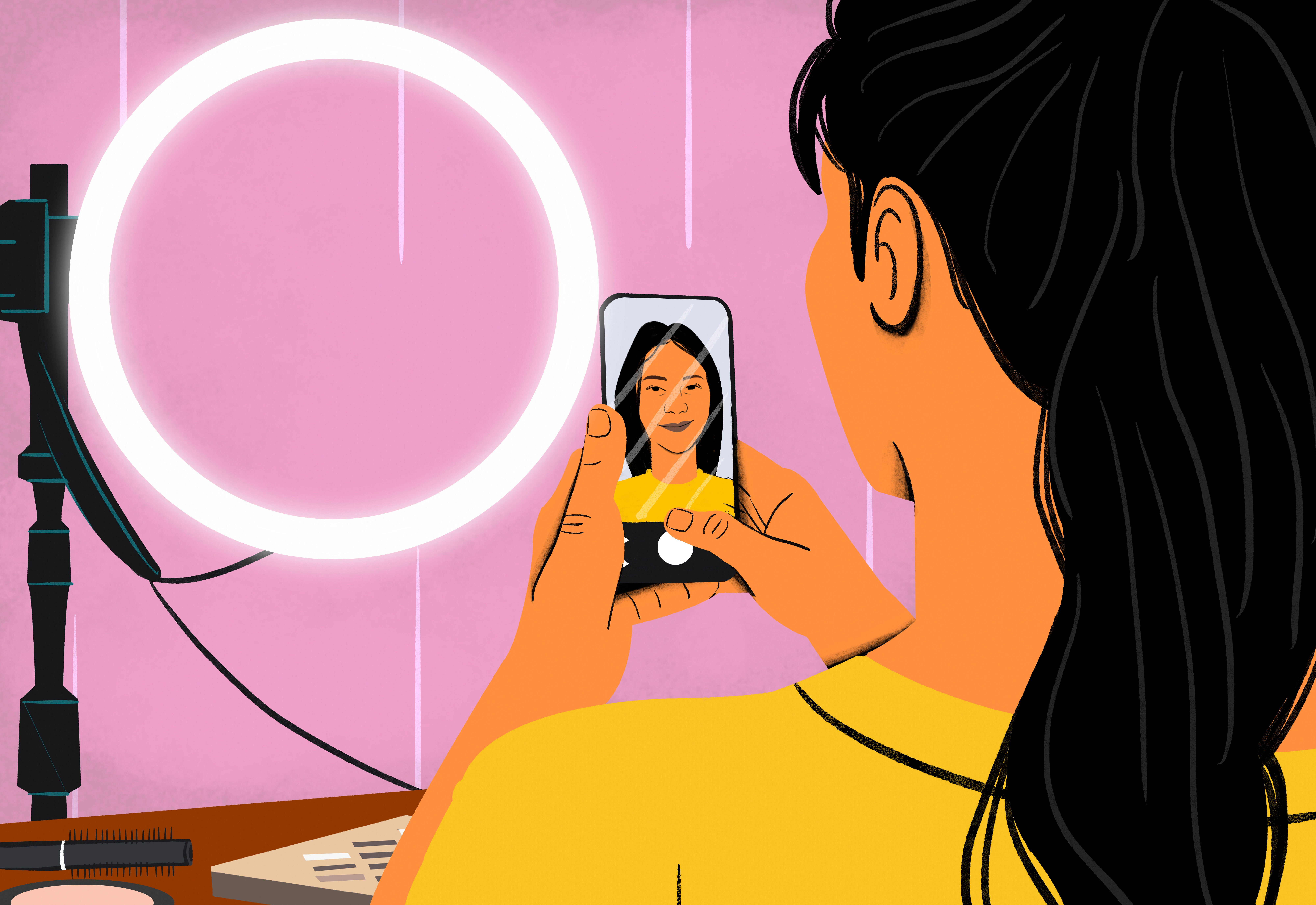What’s An ‘Influencer Accent’? Here’s Why Your Favorite Creators All Sound The Same.

While scrolling through your social media feed, you probably have noticed that a lot of influencers and content creators you watch sound the same. Close your eyes, and you might not be able to tell who is on your screen.
Similar to how people from different parts of the world have accents, social media creators who reside in the online world have developed a voice inflection that often mirrors each other. This is called an “influencer voice” or “influencer accent,” according to experts.
Advertisement
Joel Goldes, a veteran Hollywood dialect coach and founder of TheDialectCoach.com, said the influencer accent usually involves some “uptalk.”
“With uptalk, phrases end with a slight upward inflection as well as some ‘vocal fry,’ which is a gravelly sound that typically occurs at ends of words and phrases and usually results from a lack of support from the diaphragm,” Goldes said.
In addition to uptalk, Adam Aleksic, known as @EtymologyNerd on TikTok, said in a video that influencers use a technique known as “macroprosody,” which is when people use more tones than necessary to keep a person’s attention. Aside from this, they’ll also lengthen their vowels to emphasize certain keywords or fill dead space.
Advertisement
Why do influencers use an accent?
There are a few reasons why influencers might speak a certain way in their videos. One is to keep the viewers’ attention for an extended period of time. This is particularly important in a world where people are constantly scrolling and don’t stay on one piece of content for too long.
“Uptalk can help the viewer’s attention as it’s being used as a placeholder to imply that something important is about to be said,” Goldes said. “This may help them with retention statistics, holding their viewers till the end of a clip.”
For Savannah Vinson, a New York City-based influencer with almost 200,000 followers on TikTok, she noticed that having a high-pitched, high-energy voice in her videos helped her viewership.
Advertisement
“It wasn’t something I naturally had, but I adapted to it for my videos,” Vinson told HuffPost. “Sometimes I’ll even mispronounce a word on purpose just to get people to correct me in the comments as it sparks engagement, which helps push the video out and can even make it go viral.”
Aside from keeping viewers’ attention, Leslie Sanders, a licensed clinical psychologist and program director of mental health facility the AToN Center, said that influencers tend to change their accent or speech style to better connect with their audience, a technique known as “mimicry.”
“This tendency also gives audiences the impression that the influencer speaks ‘their language’ which fosters a connection,” Sanders said. “In this manner, influencers can enhance audience interaction and loyalty by bridging the gap using language and style.”
Advertisement
You can think of this as influencers using a certain style of voice to create a rapport with their viewers and audience to get them to want to follow along and watch their content.
Can the influencer accent be learned?
We all learn languages and accents partially by imitating them, and aspiring content creators can certainly pick this accent up by listening to successful influencers.
“Listening to a new accent, and repeating it, builds new neural pathways in the brain. We all build hundreds of them daily, and this allows the listener to hear and use any new accent more accurately,” Goldes said.
Advertisement
Peter Petrella, an Orlando-based influencer with 95,000 followers on TikTok, said that since his content is largely commentary, his influencer accent is more similar to that of a news anchor.
″You’ll start to find that there’s a certain viewer expectation going into these different content styles,” Petralla told HuffPost. “Vlog-style creators will oftentimes have a more sharp and bubbly ‘influencer accent’ while conspiracy-style creators will have a more quiet and calm accent.”
We Don’t Work For Billionaires. We Work For You.
Already contributed? Log in to hide these messages.
That said, similar to most jobs, doing something consistently can get difficult after a while. Even for many creators, it can get tiresome to use an upbeat and bubbly voice in all of their content, especially if they are posting multiple videos each week.
Advertisement
“There are days when keeping up that high-energy tone feels exhausting, and I don’t always feel like performing, ” Vinson said. “On those days, I try to switch things up, whether it’s filming a more relaxed video, taking a break or focusing on behind-the-scenes work instead.”
But on the days when your feed all sounds the same, don’t be shocked.

Comments are closed.